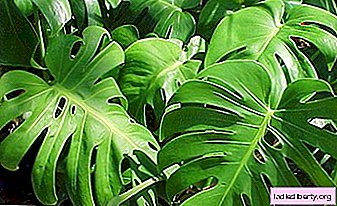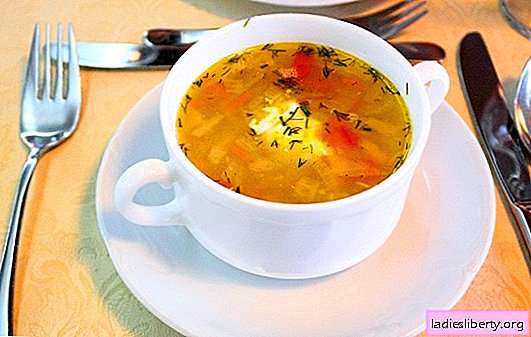
Monstera is an evergreen vine of the aroid family. Her homeland is East India and South America. However, the exotic origin did not prevent her from becoming one of the most popular indoor plants in our conditions. The secret of this popularity lies, first of all, in the unpretentiousness of the flower, as well as the originality and brightness of the color, which makes it a welcome guest in many residential premises and offices.
However, if the monster is in good conditions, then it will grow very soon and in a few years it may take half the space of a small room. Therefore, most often its place of location is offices or in spacious halls and foyers, where it personifies respectability and success.
Indoor only successfully grown Monstera delicate - Monstera deliciosa. When its leaves are very young, they are whole, but as the plants grow, they become completely cut. Even the flowering of this plant is very original: it produces inflorescences - cobs, which consist of small flowers. If all the growing conditions are observed, then a year after flowering, the monstera can bear fruit, and its ripe fruit is quite edible, resembling pineapple in taste. In an immature state, it can cause burns to the oral mucosa.
Monstera - growing and care
This plant is shade tolerant, but still it is better to find a place for it with bright diffused light or light partial shade. It must be remembered that it equally does not tolerate both deep shade and direct sunlight. The best option for placing a flower would be the space near the windows (preferably eastern or western). If you choose the right lighting, the plant will respond to this with a quick enlargement of the leaves. Adult monsters do not like changing light conditions, so you should not change the place habitual for the plant unnecessarily.
It begins to grow actively at a temperature of 16 ° C, but a temperature of about 25 ° C is considered optimal. For the winter period, the optimum temperature is from 16 ° C to 18 ° C, although for a short time the flower can withstand temperatures up to 10-12 ° C without problems.
Watering for it should be plentiful in spring and summer, using soft, defended water. The plant requires watering when the top layer of the substrate is dried. In the fall it is watered less, in the winter - a couple of days after the drying of the upper layer of the substrate. Excessive moisture should be avoided to avoid the appearance of dark spots on the leaves and rotting of the roots. However, the drying out of an earthen coma is also unacceptable.
Also, the flower needs regular spraying with soft, settled water at room temperature, and periodically wiping the leaves with a damp cloth in order to clean it from dust.
Adult specimens require mandatory fertilizing with mineral and organic fertilizers (from March to August - every 2 weeks), since without them their growth slows down. For young people, fertilizing is optional.
As the plant grows, support becomes necessary. Usually it becomes a hollow tube with moss, but you can use a grill, sticks stuck in a pot, a stretched cord, etc. Forming a garter, you need to remember that the monstera has aerial roots that contribute to its better nutrition and cannot be trimmed, so they should be fixed on a support.
Monstera - transplant and reproduction
Young plants need an annual transplant; for 3-4 years old, a transplant every 2 years is sufficient; after reaching 5 years of age, the monster is transplanted every 3-4 years, subject to annual land addition. For transplantation of young plants take a mixture consisting of sod (1 part), humus (2 parts), peat (1 part) earth and sand (1 part). The mixture for adult plants consists of 3 parts of turf and 1 part of deciduous, peat, humus and sand. Drainage should also be provided. For a good development of the plant, it is better to take large pots.
Monstera propagated by cuttings and aerial layering. This is done simply: the overgrown top of the plant is cut together with several aerial roots and planted independently. The mother plant continues to grow successfully after this operation.
Monstera - possible diseases and pests
Like others, this plant suffers primarily from improper care. For example, if its leaves began to turn yellow, or brown spots appeared on them, then most likely there is a draft in the place where the flower was placed, which it does not tolerate. Lack of nutrition also leads to yellowing of the leaves.
In the shade, this plant begins to grow poorly, its stem lengthens and twists, however, an excess of sunlight can cause the appearance of pale leaves with yellow spots. Waterlogging of the soil can lead to yellowing and even decay of the leaves. If the leaves have a single plate, then the flower does not have enough light or nutrients.
Monstera can be damaged by pests such as spider mites and scale insects. They are disposed of by mechanical cleaning of the leaves with a soapy sponge, followed by spraying with an Actellik solution (1-2 ml of the drug is taken per liter of water).











